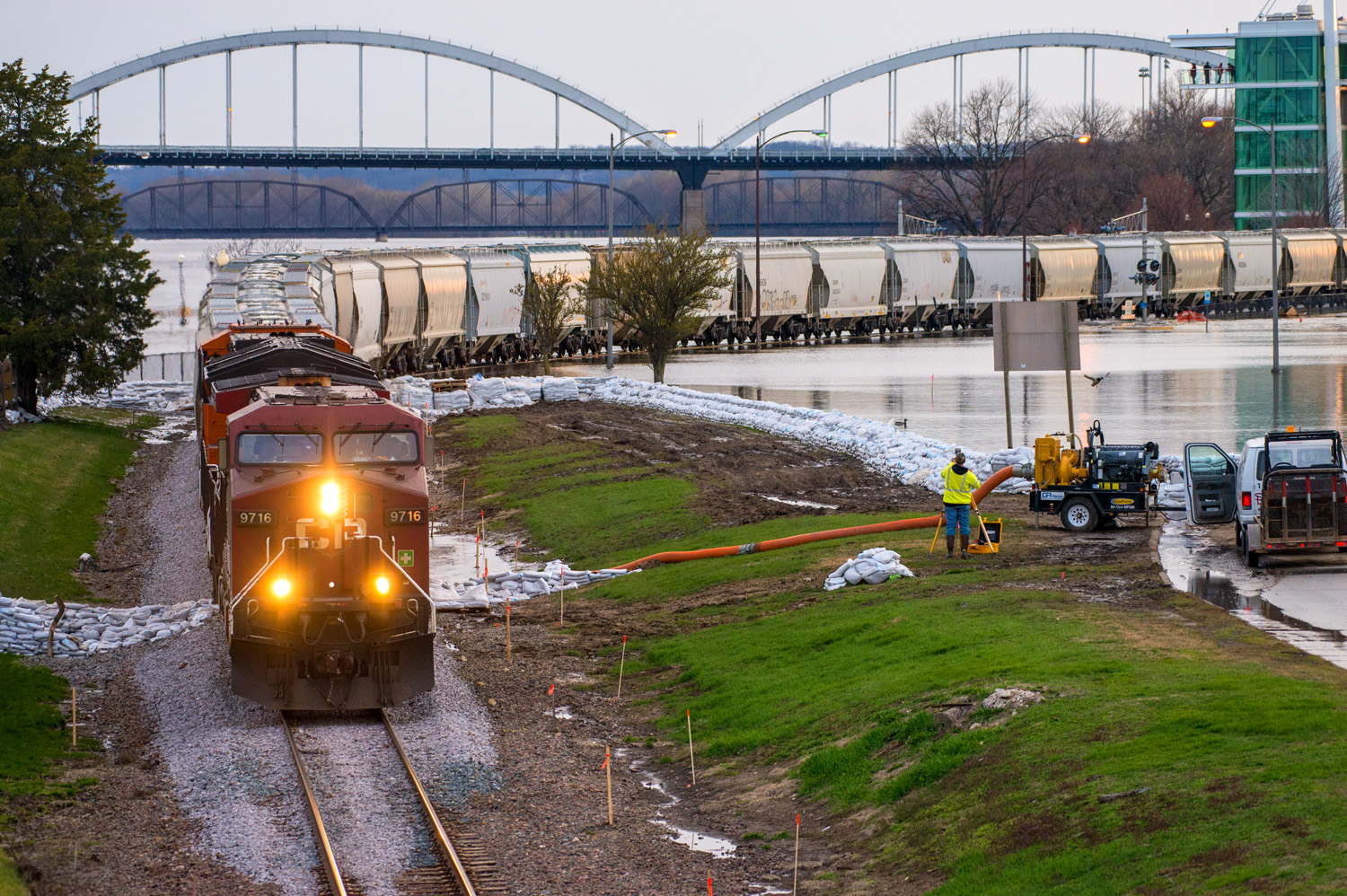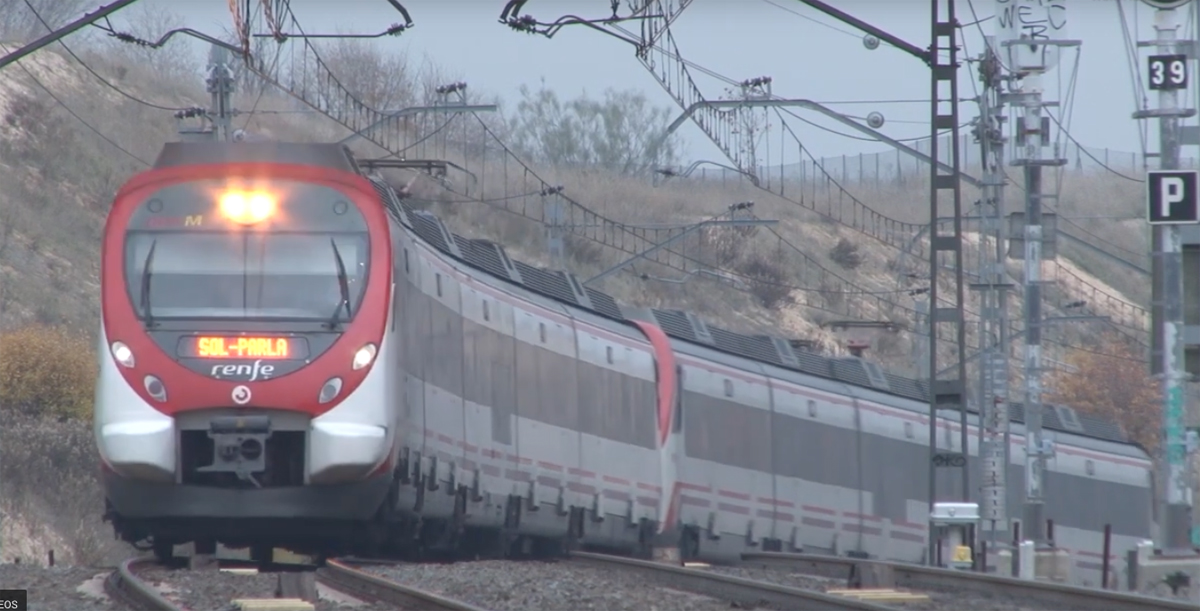The City of Davenport says it has concerns over how the work will affect the reopening of seven waterfront intersections.
The Quad-City Times newspaper reported that CP engineering officials met with Mayor Frank Klipsch and other city officials recently, with CP assuring the city the crossings will be restored to compliance with federal disability access laws once the river waters subside.
Thousands of sandbags surround downtown businesses, flood gates remain closed, and several pumps are running 24-7 to remove water. Iowa Highway 61 and River Drive are closed in several locations with water over the roadway.
CP had been shoving both north and south bound trains through the flooded area with locomotives on either end to prevent shorting out traction motors, but is back to running conventionally-powered trains slowly through the flooded area due to the work done to raise trackage.
The National Weather Service monitoring station at Rock Island, Ill., directly across from Davenport showed 19-feet-3-inches of depth; the flood stage is 15 feet.















Davenport made the choice a couple of generations ago to preserve its open downtown riverfront and risk flooding rather than wall off the river with dikes that obscure the view and isolate the city from its riverfront. It’s a big tradeoff either way–securing property against a few weeks of flooding every few years on one hand; living dry but within walls year-round, floods or not, on the other.
I agree with Timothy: I assume that the track-raising effectively blocked several crossings, and the question is whether CP will lower the tracks again after the flood or will pay to have streets re-engineered to cross the tracks at the new level.
Diesel-hydraulic or diesel-mechanical units don’t short out either.
James, I think the mayor is expressing concern on what happens after the water recedes from how I read the article. In other words, CP follows through with repairs and or changes to the crossings after the tracks were raised as you noted.
Steam engines don’t short out…
I am entertained, though, that the mayor is concerned about disability access across the crossings. I’m all for disability access, but if the crossing was underwater? Really? Just pull the extra ballast and repair any water damage.
I recollect SP doing something similar about 30 years ago to raise the level of the Lucin Cutoff across the Great Salt Lake.